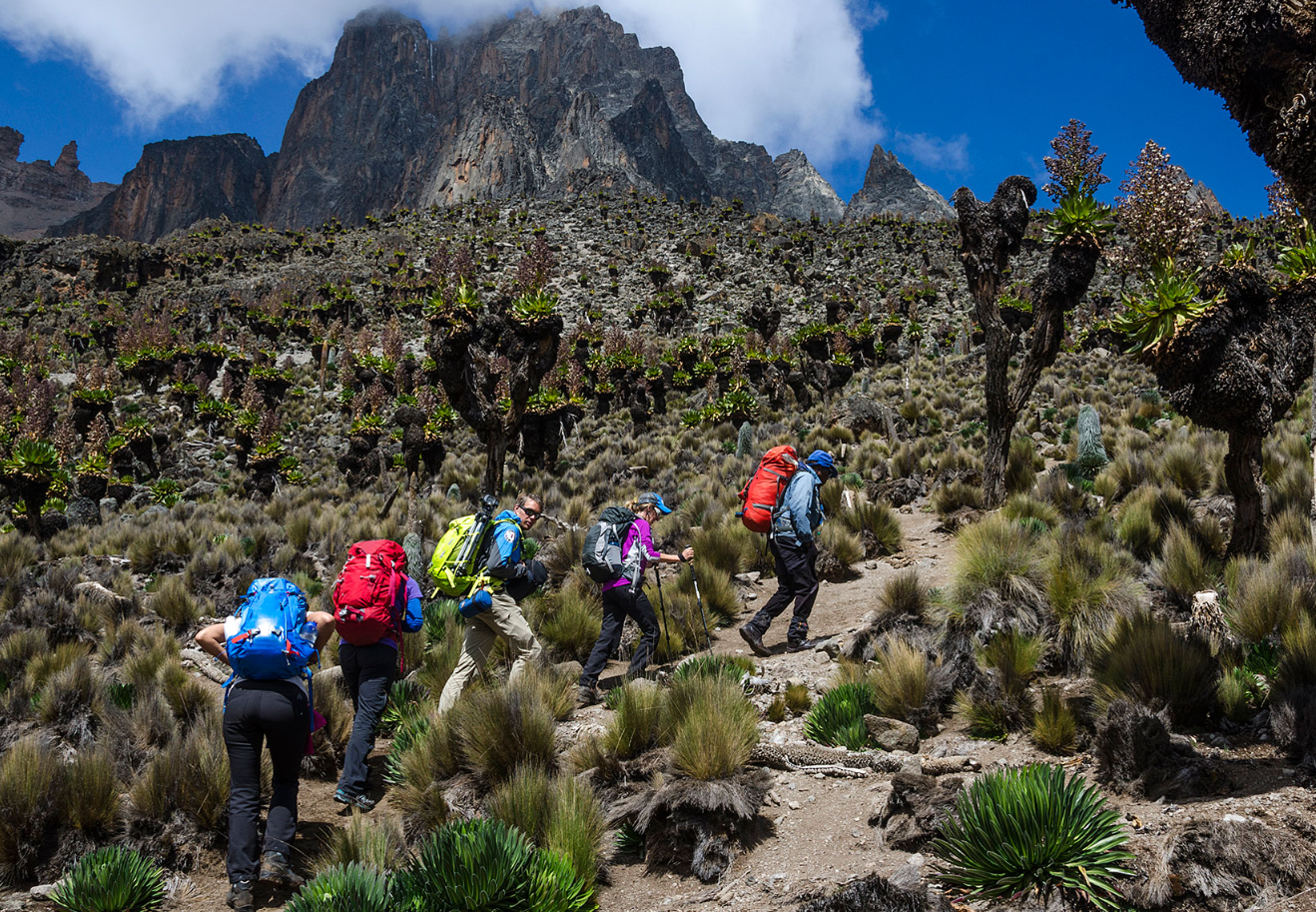Mount Kenya Routes: Batian & Nelion Route
Climbing Mount Kenya: Exploring the Nelion & Batian Routes
Mount Kenya, Africa’s second-highest mountain, offers some of the most spectacular climbing experiences in the world. While many climbers choose the easier trekking routes like the Sirimon and Chogoria paths, adventurous mountaineers looking for a greater challenge turn their eyes to the more technical routes: Nelion and Batian. These peaks, standing at 5,188 meters (Nelion) and 5,199 meters (Batian), are the highest points of Mount Kenya and offer an exhilarating experience for seasoned climbers.
At Kenya Horizon Safaris, we specialize in organizing unforgettable expeditions to Mount Kenya, including guiding mountaineers up these challenging peaks. If you’re seeking a thrilling climb that will test your skills, the Nelion and Batian routes are perfect options.
The Nelion & Batian Routes: An Overview
Nelion and Batian are the twin peaks of Mount Kenya. While Point Lenana (4,985 meters) is a non-technical trekking peak accessible to most hikers, Nelion and Batian demand technical climbing skills. These peaks are part of Mount Kenya’s main summit massifs and are typically attempted by experienced climbers equipped with ropes, helmets, and other specialized gear.
What Sets Nelion & Batian Apart?
Unlike the more popular trekking routes on Mount Kenya, the Nelion and Batian routes require technical rock climbing experience. Both routes are graded as moderate to difficult climbs, featuring vertical ascents and traverses along ridges. These routes offer more than just a physical challenge; they also reward climbers with unrivaled panoramic views and a sense of accomplishment that few other African peaks can provide.
Here’s what sets Nelion and Batian apart from other routes on Mount Kenya:
1. Technical Climbing Challenge
Unlike the trekking routes, where you can enjoy a multi-day hike, the Nelion and Batian routes require technical climbing expertise. The ascent involves scrambling, rope work, and overcoming vertical rock faces, making it an ideal choice for experienced mountaineers looking to challenge themselves. The standard route on Nelion is typically a 16-pitch climb, requiring ropes and belays to navigate safely.
2. Unique Rock Formations
The geology of Mount Kenya’s peaks adds to the thrill of the climb. The rugged rock formations along the Nelion and Batian routes are composed of volcanic rock, creating steep ridges and sharp cliff faces that climbers must navigate. These features make for a unique and memorable climbing experience that is unmatched by other African peaks.
3. Breathtaking Views
The higher you climb, the more incredible the views become. Climbing Nelion or Batian offers spectacular panoramic views of Mount Kenya’s glaciers, alpine vegetation, and the surrounding valleys. At the summit, the view is nothing short of awe-inspiring, offering an unobstructed view of Kenya’s landscape, the Aberdare Ranges, and even the distant Kilimanjaro on clear days.
4. Fewer Crowds
While the popular trekking routes like Sirimon and Chogoria see many hikers, the technical nature of the Nelion and Batian routes means fewer people attempt these climbs. This exclusivity allows for a more personal and quiet experience, with only the sounds of nature and your climbing team to accompany you.
Nelion Route: The Gateway to Batian
Most climbers attempting Batian first climb Nelion via the Mackinder Valley route, as it provides the best approach to the summit. The Nelion climb itself is a challenging 16-pitch rock climb, with fixed anchor points for belaying. Once on the summit of Nelion, experienced climbers can bivouac at the Howell Hut, a small shelter used by those planning to traverse over to Batian.
Batian Route: The Ultimate Challenge
To reach Batian from Nelion, climbers must traverse a ridge between the two peaks known as the Gate of the Mists. This section is exposed and requires additional technical skill. The traverse is not long but demands careful rope work and strong nerves due to the sheer drops on either side. Climbers must be prepared for both rock climbing and glacier travel, as Batian’s upper reaches involve snow and ice, depending on the season.
Best Time to Climb Nelion & Batian
The best time to climb Mount Kenya’s technical peaks is during the dry seasons. The periods between January and February and July to September offer the most stable weather conditions, with less risk of rain, which can make the rock surfaces slippery and dangerous. Be sure to check weather updates and prepare for sudden changes in conditions.
Climbing with Kenya Horizon Safaris
At Kenya Horizon Safaris, we have a team of experienced guides and support staff who specialize in climbing Mount Kenya’s challenging routes. We provide all the necessary logistical support, including arranging experienced technical climbing guides, permits, and high-quality gear. Our team ensures that every climber has a safe and enjoyable experience, from the moment they arrive in Kenya until they reach the summit and descend.
Whether you’re looking to conquer Nelion, Batian, or both, our guides are here to support you every step of the way. In addition, we can help organize a custom safari for you, combining the thrill of climbing Mount Kenya with a relaxing journey through Kenya’s beautiful wildlife reserves.
Start Your Climb Today!
If you’re ready to take on the challenge of climbing Mount Kenya via the Nelion and Batian routes, Kenya Horizon Safaris is here to help you plan every detail. Our expert team is committed to ensuring your adventure is unforgettable, safe, and perfectly suited to your abilities. Contact us today and let’s make your dream of summiting Mount Kenya a reality!









